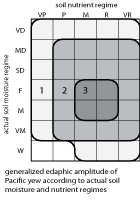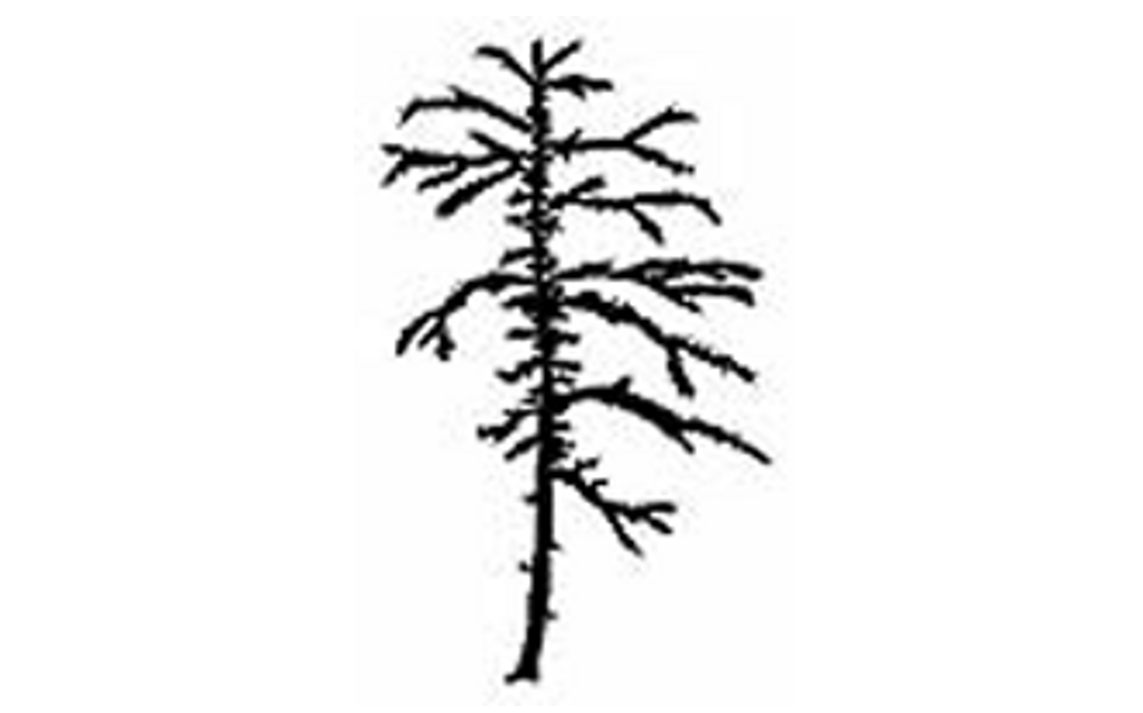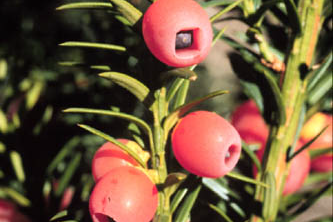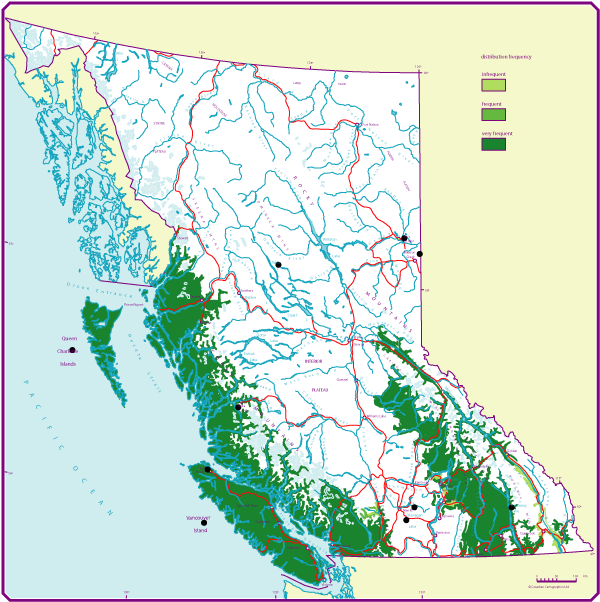Western yew
On this page
- Geographic range and ecological amplitudes
- Tolerances and damaging agents
- Silvical characteristics
- Genetics and notes
Geographic range and ecological amplitudes
Description
Pacific yew varies in size from a shrub to small-sized (<20m tall) evergreen gymnosperm, with an irregular crown, long branches, twisted and fluted stem, and scaly bark at maturity. The wood is hard and heavy, and resistant to decay. The bark was used in cancer research as it yields the taxol, a key component of cancer-fighting drug, tamoxifen. Demand for yew bark increased dramatically until it was possible to synthesize taxol chemically.
Geographic range
Geographic element:
Western North American/Pacific and Cordilleran
Distribution in Western North America:
(north), central, and south in the Pacific region; central and south in the Cordilleran region
Ecological amplitudes
Climatic amplitude:
subalpine boreal - cool temperate - cool mesothermal
Orographic amplitude:
submontane - montane - (subalpine)
Occurrence in biogeoclimatic zones:
(lower MH), (lower ESSF), (MS), IDF, ICH, CDF, CWH
Edaphic amplitude

Range of soil moisture regimes:
(very dry) - moderately dry - slightly dry - fresh - moist - very moist - (wet)
Range of soil nutrient regimes:
(very poor) - poor - medium - rich - very rich
Tolerances and damaging agents
Root system characteristics
Pacific yew develops a deep and wide spreading root system. Roots are associated with vesicular-arbuscular mycorrhizae.
| Tolerance to | Tolerance class | Comments |
|---|---|---|
| low light | H | considered as our most shade-tolerant gymnosperm |
| frost | M | |
| heat | M | frequent on warm and dry sites (for example, in CDF) |
| water deficit | M | frequent on dry and warm sites (for example, in CDF) |
| water surplus | H | infrequent on wet sites |
| nutrient (mainly N) deficiency | H | infrequent in acid, poor soils |
Associated tree species and successional role
In British Columbia, Pacific yew grows scattered in isolated clumps of one or several individuals (very rarely it forms a pure stand) in the understory of conifers, such as Pacific silver fir, Grand firs, Red alder, Western larch, Ponderosa pine, Black cottonwood, Common douglas, Western redcedar, and Western hemlock. Pacific yew is present in early, mid-, and late stages of secondary succession.
Genetics and notes
Genetics
Pacific yew was originally classified as a variety of European yew — Taxus baccata. Where different species of yew grow near each other, interspecific hybrids frequently occur, lending support to the view that there is but one species of the seven currently recognized Taxus species.
Notes
Although not a timber species, Pacific yew has several special uses — the most important one for medicinal purposes. It would be feasible to grow Pacific yew for bark production under intensive silviculture management on suitable sites. More detailed silvics information is given by:
Bolsinger, C.L. and A.E. Jaramillo. 1990. Taxus brevifolia. Pp. 573-579 in R.M. Burns and B.H. Honkala (technical coordinators) Silvics of North America, Vol. 1. Agri. Handbook 654, USDA For. Serv., Washington, D.C.

This is the general shape and outline of the western (Pacific) yew.

The red, fleshy, edible, structure partially surrounding the very poisonous seed of the Pacfic yew is the aril.

